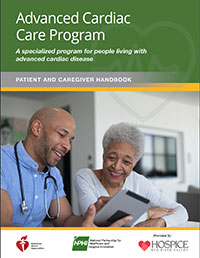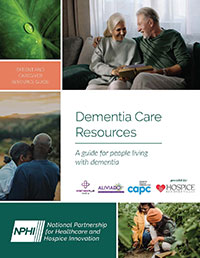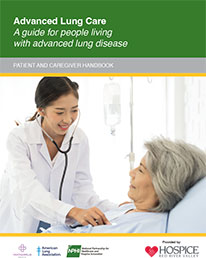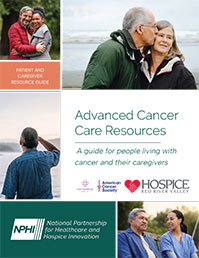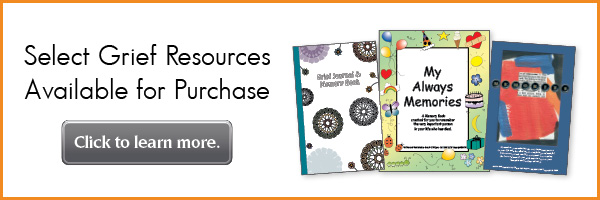We recognize that during the end-of-life process, caregiving and grief can be challenging. You may feel overwhelmed or alone at times, but Hospice of the Red River Valley is committed to helping you.
Explore the sections below to find resources covering caregiving, grief and activities. If you have questions about a specific topic, please contact us.
Common Conditions Resources
Caregiving Articles
The following articles and videos may be helpful to family caregivers. Additional articles can be found on our blog.

Coping with Another Person’s Suffering
As a caregiver of someone with a terminal illness, here are things you can do to cope with another person’s pain and symptoms.

Eating & Drinking at the End of Life: Beneficial or Harmful?
Hospice professionals can help families and caregivers understand how food and fluids factor into end of life.
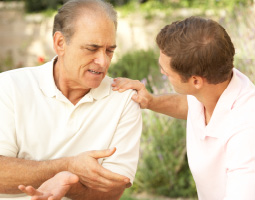
Difficult Conversations About Hospice Care
This resource offers guidance on when and how to start the conversation about end-of-life care.

Gift Ideas for Hospice Patients
When someone dear is terminally ill, you want to give them love and support. But you may also wish to give them something to show you care and enhance their comfort.

Tips for Visiting a Terminally Ill Family Member or Friend
This articles offers suggestions on how to prepare for a visit, as well as ideas to guide you during that time.
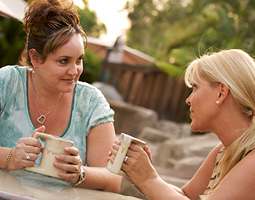
What to Say When You Don’t Know What to Say
During difficult times, what you say and how you say it can make all the difference.

Signs & Symptoms of Pain
Several signs and symptoms may indicate emotional, physical or spiritual pain

How to talk to Children about Serious Illness
A child can be prepared even in the face of tragedy. This will give him or her the best possible opportunity to emerge whole and healthy.
5 Tips for Long-distance Caregiving
Caregiving is rewarding, and it’s also a tough road to travel. When you are unable to be physically present with the person you are helping care for, it’s even tougher. Learn practical ways to be a caregiver even from a distance.
5 Tips to Prepare When Caring for a Loved One at Home
Caregiving is a universal experience, and we don’t have to view it as uncharted territory. We can utilize some best practices to help alleviate stress and make the time spent providing care safe for all involved. Learn five practical tips for caring for a loved one in the home.
Grief Support Articles
The following articles and videos may be helpful grief support resources. Additional articles can be found on our blog.
New Year’s Resolutions for Grieving
New Year’s resolutions for the grieving: a set of suggestions suited for those who are entering a season of their lives grieving someone they loved.

Healthy Ways to Keep Memories Alive
A remembrance tradition can provide a place for healthy remembering. This article provides suggestions on ways to honor the memory of a loved one.
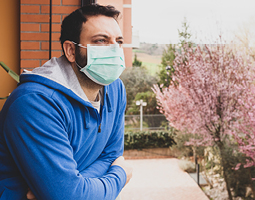
Managing Grief During a Pandemic
During this time of limited contact and connection, grief can accompany the struggles people are experiencing with COVID-19 challenges.
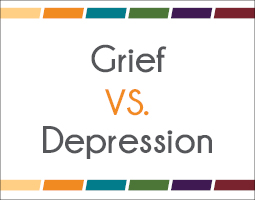
Grief vs. Depression: What You Need to Know and When to Seek Help
It is not uncommon for people to question whether they or someone they know is depressed after the death of a loved one.

10 Ways to Help a Grieving Friend
We struggle to know what to do when a friend loses a loved one through death.
Social Distancing & Grief: 5 Tips for Self-care
Trying to balance the recommended guidelines for social distancing while grieving can be daunting. Taking good care of yourself becomes even more important during times of stress and grief. Self-care includes tending to your own physical, emotional and social well-being. It’s possible to find ways to practice good self-care even in times of turmoil. Learn how taking one step at a time and making a few small changes can make a lasting impact on your overall health and help you on your path to healing.
What Does Grief Look Like?
Jennifer Messelt, Hospice of the Red River Valley grief specialist, shares a hands-on, adult-led activity you can use with children to help them understand what grief looks like and what they can do to cope with their grief.
*This activity is intended to be led by an adult. Children should not handle the materials.
Guided Visualization Activity – Prairie Meadow
This is a guided visualization will help individuals cultivate positive self-care through mindful relaxation techniques. This exercise can help you cope with grief and loss by using mindfulness.


